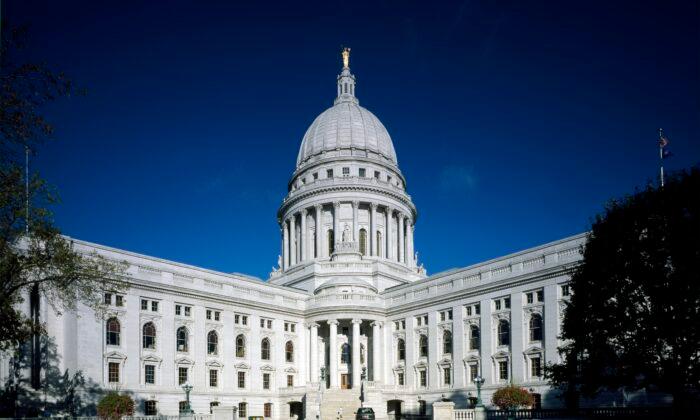Forty-five state legislatures will convene 2023 sessions by Jan. 18, with 35 doing so on or before Jan. 11—including 18 this week.
By the time deliberations conclude in December, the nation’s 7,383 state lawmakers will introduce on average a collective 110,000 bills—250,000 across two-year biennium sessions—and adopt more than 30,000 new laws and regulations.
While cable TV networks and digital sites near-exclusively focus on national issues being debated in Washington, the real action in adopting policies, imposing regulations, and making decisions that affect Americans’ day-to-day lives occurs in state capitols during annual legislative sessions.
According to an analysis by Quorum States, a Washington bill-tracking service, state legislatures introduce 23 times more bills than Congress does annually. The average state lawmaker either sponsors or signs onto 33 bills, with about four being adopted each session.
In 2023, all 50 state legislatures will convene, including Montana, Nevada, North Dakota, and Texas, which only meet in odd-numbered years. Lawmakers in eight states—California, Illinois, New Jersey, New York, Pennsylvania, Michigan, Wisconsin, Ohio—essentially meet year-round with recesses.
Most state legislatures, however, are only in regular session 30 to 90 days a year, meaning sessions can be fast-paced as they near adjournments often mandated by state constitutions.
The elected bodies can also vary greatly in size and scope. Unicameral Nebraska has only a 49-member nonpartisan Senate while New Hampshire has 400 representatives in its House alone.
According to the National Conference of State Legislatures (NCSL), during the Nov. 8 midterms, 6,279 state legislature seats across 46 states were on ballots, including 85 percent of the seats in 88 of the nation’s 99 state legislative chambers (unicameral Nebraska)—4,978 of 5,413 House seats, 1,301 of 1,973 Senate seats.
Going into 2023, there will be 4,031 Republicans and 3,271 Democrats in state legislatures. The GOP controls 58 of the 99 chambers with 28 “trifectas”—majorities in both chambers and a Republican governor. Democrats own “trifectas” in 19 states.
On legislatures’ dockets in 2023 will be the annual top three issues—state budget, education, and health care—as well as legislation related to marijuana, autonomous vehicles, energy, prescription drugs, data privacy, policing, sports gaming, liquor laws, firearms, family paid leave, technology, and school choice, all while managing more than $2 trillion in yearly balanced-budget spending.
In the wake of the U.S. Supreme Court’s overturning of Roe v. Wade in June 2022, state lawmakers across the nation will be deliberating bills regulating abortion during 2023 with those in blue states seeking to ensure access and those in red states looking to impose further restrictions.
With state budgets flush with federal pandemic aid and economic stimulus money, lawmakers in many states will again focus on tax policies. Taxpayers across at least 38 states will already see significant changes in state taxes in 2023 with 11 states trimming their income tax levies following the adoption of 2022 bills.
Also on tap in 2023 will be a second session of allocating federal funds from the $1.2 trillion Infrastructure Investment & Jobs Act (IIJA) adopted by Congress in November 2021 for often long-planned infrastructure projects.

Going into 2023, California and Maine have technically already begun their deliberations by convening in December.
After several years of kicking off annual sessions in January, Florida lawmakers will return to Tallahassee in March, joining Alabama in convening on March 7.
By the time Louisiana lawmakers meet on April 10—the last state to convene its annual regular session—at least a dozen states will have adjourned for the year.
Below is a listing of when state legislatures are scheduled to convene in 2023 with planned regular session adjournment dates in parentheses.





